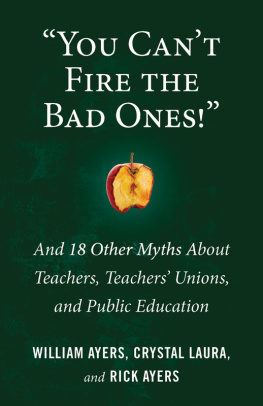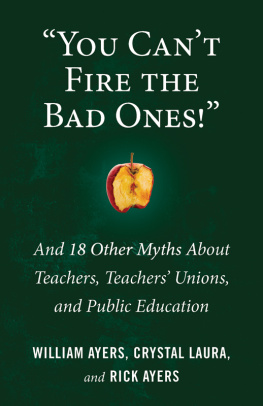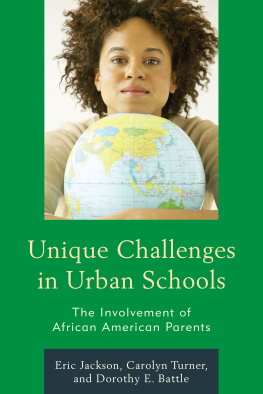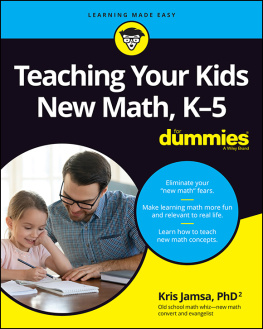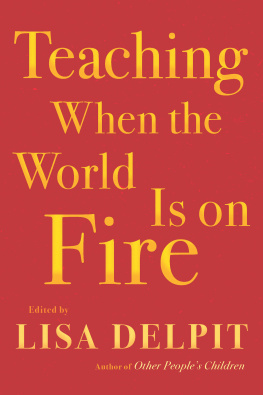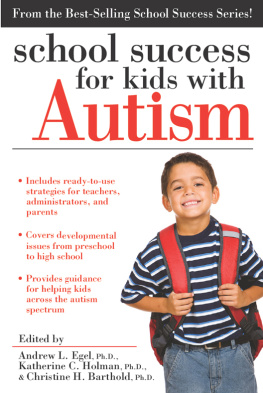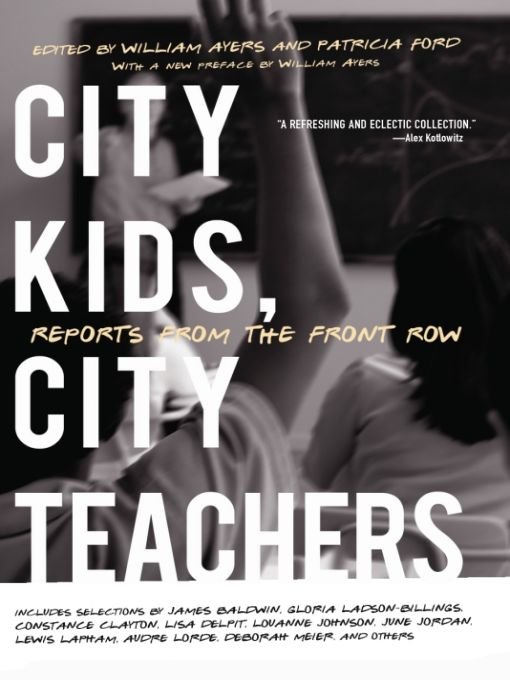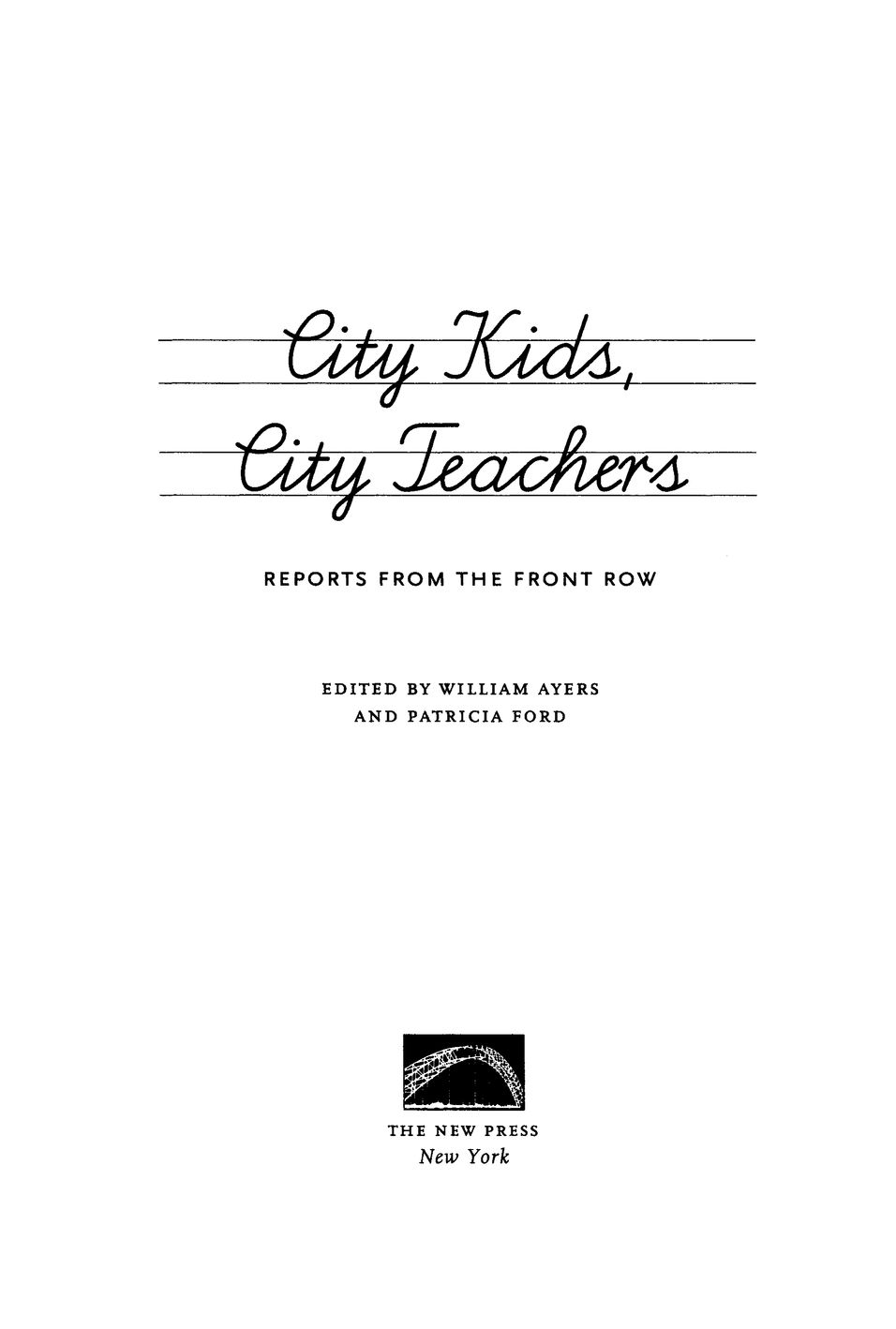Table of Contents
BOOKS BY WILLIAM AYERS
To Become a Teacher:
Making a Difference in Childens Lives
(editor)
To Teach:
The Journey of a Teacher
Teacher Lore:
Learning From Our Own Experience
(coedited with William Schubert)
The Good Preschool Teacher:
Six Teachers Reflect on Their Lives
Prairie Fire
This book is dedicated to five city kids:
TIFFANY, STEPHANIE, CHESA, MALIK, AND ZAYD
and to the memory of SARAH ELIZABETH FORD,
Pats mother and first teacher, who touched those around her
with wisdom, strength, courage, and compassion.
LIFT EVERY VOICE AND SING
Lift every voice and sing
Till earth and heaven ring,
Ring with the harmonies of Liberty;
Let our rejoicing rise
High as the listening skies,
Let it resound loud as the rolling sea.
Sing a song full of the faith that the dark
past has taught us,
Sing a song full of the hope that the
present has brought us,
Facing the rising sun of our new day begun
Let us march on till victory is won.
Stony the road we trod,
Bitter the chastening rod,
Felt in the days when hope unborn
had died;
Yet with a steady beat,
Have not our weary feet
Come to the place for which our fathers
sighed?
We have come over a way that with tears
has been watered,
We have come, treading our path through
the blood of the slaughtered,
Out from the gloomy past,
Till now we stand at last
Where the white gleam of our bright star
is cast...
James Weldon Johnson
PREFACE TO THE 2008 EDITION
When City Kids, City Teachers was published a decade ago the problems facing urban schools were vast: crumbling infrastructure, inadequate resources, choking bureaucracies, the demonization and criminalization of urban youngsters, a fierce market fundamentalism, an unyielding obsession with unreliable standardized tests, and more. City Kids, City Teachers was meant as an intervention, a beacon of hope, and a manifesto, as Ossie Davis wrote at the time, against arrogance, thoughtlessness, and selfishness on one side, hopelessness and helplessness on the other.
We wanted to resist the lazy clich that paints city kids as dangerous and deficient, and we wanted to see beyond the stereotypes and the labels that cling to urban youth like barnacles, sharp and ugly. We interrogated reality but we simultaneously explored possibility.
Ten years on, the wisdom in these pages still resonates with even more relevance, more urgency. The writings hold power, not as gospel, but as a range of useful suggestions to continue to work on with our own intelligences and through our own activities today. And now this collection is joined by a new volume: City Kids, City Schools. Taken together they offer guidance and perspective, concrete advice and necessary argument. Together they will fit snugly into your backpackbetween the water bottle and the vitamin Cat the ready for the struggle ahead.
The issues, problems, and challenges facing city kids and city teachers are depressingly familiar, but the landscape has also altered in a decade, and educators face new realities as they struggle to teach and to learn in city schools:
The current iteration of Title I/ESEA, the infamous No Child Left Behind law, has affected schools profoundly: narrowing the curriculum, punishing schools and students who need more resources, focusing on testing rather than teacher, and failing utterly to address the real educational needs of schools.
The promise of Brown versus Board of Education to recognize the full humanity of African Americans and to translate that recognition into meaningful policy has been under steady attack for years. In June 2007 the Supreme Court broke new ground in ruling that voluntary desegregation plans in Seattle and Louisville were unconstitutional. In effect the Court proclaimed separate can indeed be equal under the law. This is a giant step backward.
The marketeers and privatizers have stepped up their efforts to dismantle public education nationwide and, in the aftermath of Hurricane Katrina, found what they thought was a perfect storm of abandonment, loss, despair, and blank landscape. As elsewhere they operate under a controlling metaphor that education is a product, like a TV or a car, and that students are consumers in a marketpublic resources then can best be used if shifted and channeled to private corporations. But if education is a democratic and human right, and if the public needs to be present in the public space, the metaphor falters and fails.
Militarization of city schools is rising as Junior ROTC programs target poor, black, and Latino students who dont have a range of options in terms of extra-curricular activities (arts, sports, or clubs) so that the accompanying culture of warmilitarism, aggression, violence, repression, the dehumanization of others, and mindless obediencebecomes the default choice for these kids.
Criminalization of youth through zero tolerance policies combined with irrelevant and crumbling schools creates a wide and welcoming school-to-prison pipeline.
To keep some perspective on the struggles ahead we mustall of usreiterate first principles and fundamental goals. I want to resist being swept along on the rushing tide of demands and standards and continuous crisis that screams act! act! act!but never ask us to think or reflect or enter into a dialogue or reconsider or make ethical judgments. Slow down. What is education and what is teaching at its best?
W.E.B. DuBois said that education is not an enterprise designed to make a man a carpenter, but rather its deepest goal is to make a carpenter a man. He was pointing to the humanistic ideal, the democratic injunction that tells us that every person is an entire universe, that each can develop as an autonomous individual engaged with others in a common polity and an equality of power, that the full development of each must become the condition for the optimal development of all. This may sound good, but note that it stands in sharp conflict with notions of education based on elitism and hierarchy and fierce competition, the ever-repeating and ugly notion that poor people and Native and African American people and immigrants are undermining excellence in schools and societydehumanization can be both policy and practice.
Central to an education for citizenship, participation, engagement, and democracyan education toward freedomis developing in students and teachers alike the ability to think for themselves. The core lessons of a liberating education are these: we each have a mind of our own; we are all works-in-progress swimming toward an uncertain and indeterminate shore; we can join with others in order to act on our own judgments and in our own freedom; human progress and freedom is always the result of thoughtful dissent and action.
Schools for obedience and conformity are characterized by authoritarianism and irrelevance, passivity and fatalism. They turn on the little technologies for control and normalization in classroomsthe elaborate schemes for managing the crowd, the knotted system of rules and discipline, the exhaustive machinery of schedules and clocks, the laborious programs of testing and grading, assessment, judgment, and evaluation, all of it adding up to a familiar cave, an intricately constructed hierarchyeveryone in a designated place and a place for every one. Knowing and accepting ones pigeonhole on the vast and barren mountainside becomes all the lesson one needs.


